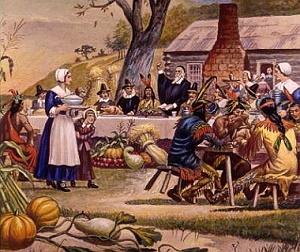We ask you, urgently: don’t scroll past this
Dear readers, Catholic Online was de-platformed by Shopify for our pro-life beliefs. They shut down our Catholic Online, Catholic Online School, Prayer Candles, and Catholic Online Learning Resources—essential faith tools serving over 1.4 million students and millions of families worldwide. Our founders, now in their 70's, just gave their entire life savings to protect this mission. But fewer than 2% of readers donate. If everyone gave just $5, the cost of a coffee, we could rebuild stronger and keep Catholic education free for all. Stand with us in faith. Thank you.Help Now >
Literacy and The Necessity of the Visual
FREE Catholic Classes
In a world where our minds and hearts are, on a daily basis, being shaped and informed by images, whether stills or moving, becoming visually literate is a goal we should all pursue and should certainly provide for our children. This will mean that we learn not only to understand the "grammar" of image representation but also the skills to create those representations. In other words, we all need to learn how to make a film. More on this later!
Highlights
Catholic Online (https://www.catholic.org)
1/29/2014 (1 decade ago)
Published in U.S.
Keywords: beauty, Liturgy, love, relationships, priesthood, culture, enthsuiasm, renewal, reform, Catholic Culture, rubrics, worship, Holy Mass, Divine Liturgy, Pope Emeritus Benedict XVI, Deal W. Hudson, literacy
WASHINGTON, DC (Catholic Online) - The first commercial television network, the DuMont Television Network, began to broadcast in 1946, but programming was limited to viewers between New York and Washington, DC. Over the next two years, NBC, ABC, and CBS began regional broadcasting.
It wasn't until 1951 that national broadcasting emerged with all four networks using AT&T's microwave radio relay lines. Dumont, which first broadcast the Rev. Fulton Sheen and launched Jackie Gleeson, went out of business in 1956, leaving the American public adjusting their "rabbit ears" to view the programming of the "big three" networks.
The movies, as a visual medium, were already integral to the daily life of American culture and consciousness; film having already passed through two "golden ages," one the silent era and another in sound. The presence of televisions in the home grew quickly, from 6,000 in 1946 to 12 million in 1951. By 1955 television had entered one-half of all American homes. The three networks dominated TV screens; color was added in 1964; cable TV arrived in the 70s.
Viewers were given more power over their own viewing with the arrival of the VCR in the 60s, a format not widely adopted until the mid-70s. The DVD went on sale in 1997, but its rentals did not surpass the VCR until 2003. The first Blu-ray titles appeared in June, 2006 and grew steadily until Internet "streaming," which had begun with a performance by "Severe Tire Damage" on the Internet June 25, 1993.
By 2011, more Americans were streaming visual content than DVD and Blu-ray combined: 3.4 billion via online streaming, up from 1.4 billion in 2010, while disc based watching decreased from 2.6 billion in 2010 to 2.4 billion in 2011. One large factor: consumers paid 51 cents for movies consumed online, compared to $4.72 for disc based titles.
Through these media, viewing movies, TV shows, and the attendant commercials became a significant presence in our lives. But then came a complete game changer: The backbone of the World Wide Web or the "Internet" was years in development, but its popular use didn't begin until the 80s, rising to prominence in the mid-90s. In 2005, 16% of the world was using the Internet; this increased to 39% by 2013. In the developed world, the range was from 51% in 2005 to 77% in 2013.
The "new media" made possible by the Internet and the availability of the PC and the PDA (any kind of personal data assistant - phone or tablet) has captured and joined together the reading world, including books, newspaper, and magazines, and the visual world of film (TV, DVD, Blu-ray) and made them available to people worldwide, anywhere they happen to be, at home or elsewhere.
This massive switch of reading from print to the digital medium has made it possible to use visual means for many kinds of communication - such as in journalism, education, advocacy, and politics - that were once largely confined to print. The demands on our "visual literacy," as it is called, have multiplied exponentially. One 2013 study found that Americans spend 32 hours per week online, while the average global user spends 16 hours. That's 19% of all the hours in a week, including time devoted to sleeping. If you subtract, say, 7 sleeping hours, the percentage becomes 27% for all waking hours, over one quarter of our waking time!
My generation, the heart of the post WWII "baby boom," learned its visual literacy through experience, not by formal training. We were taught to read, interpret texts, and to use language effectively, both written and spoken (remember when public schools taught cursive writing.) These skills, combined with a knowledge of history, literature, math, and science, were considered to create a literate citizenry, a citizenry capable, among other things, of participating in a democratic society.
Visual literacy can be understood by analogy to literacy in the language arts. We learn not only how to read a text - its use of narrative voice, metaphor, simile, symbol, imagery, plot, character, action, spectacle - but we learn how to write, how to create a text. Reading and writing enrich each other, making that form of literacy more penetrating and sophisticated. When it comes to visual literacy, there is very little formal education offered in the public schools and even less in the form of continuing education for adults.
Given the dominance of visual communication in this generation, it's ridiculous that our school curricula don't include requirements in learning the basics of "reading" images as well as the basics of creating those images.
In a world where our minds and hearts are, on a daily basis, being shaped and informed by images, whether stills or moving, becoming visually literate is a goal we should all pursue and should certainly provide for our children. This will mean that we learn not only to understand the "grammar" of image representation but also the skills to create those representations. In other words, we all need to learn how to make a film. More on this later!
Summary
1. American culture since 1950 has been more and more dominated by video communication, culminating in the spread of Internet communication aided by the use of PDAs.
2. Educational curricula as they were structured in the 50s, based upon models of literacy based upon the printed word and classical works of art, have not changed very much, leaving a huge gap in our collective "visual literacy."
3. Visual literacy will require the skill to create as well as interpret, just as the old literacy required the ability both to read and to write, in both cases the one enriches the other.
© Deal W. Hudson, Ph.D
-----
Deal W. Hudson is president of the Morley Institute of Church and Culture, Senior Editor at Catholic Online, and former publisher and editor of Crisis Magazine.This column and subsequent contributions are an excerpt from a forthcoming book. Dr. Hudson's new radio show, Church and Culture, will begin broadcasting in February on the Ave Maria Radio Network.
---
'Help Give every Student and Teacher FREE resources for a world-class Moral Catholic Education'
Copyright 2021 - Distributed by Catholic Online
Join the Movement
When you sign up below, you don't just join an email list - you're joining an entire movement for Free world class Catholic education.
-

-
Mysteries of the Rosary
-
St. Faustina Kowalska
-
Litany of the Blessed Virgin Mary
-
Saint of the Day for Wednesday, Oct 4th, 2023
-
Popular Saints
-
St. Francis of Assisi
-
Bible
-
Female / Women Saints
-
7 Morning Prayers you need to get your day started with God
-
Litany of the Blessed Virgin Mary
Daily Catholic
 Daily Readings for Friday, November 29, 2024
Daily Readings for Friday, November 29, 2024 St. Saturninus: Saint of the Day for Friday, November 29, 2024
St. Saturninus: Saint of the Day for Friday, November 29, 2024 Psalm 31 (the Second Penitential Psalm): Prayer of the Day for Friday, November 29, 2024
Psalm 31 (the Second Penitential Psalm): Prayer of the Day for Friday, November 29, 2024- Daily Readings for Thursday, November 28, 2024
- St. Catherine Laboure: Saint of the Day for Thursday, November 28, 2024
- The Salve Regina (Hail Holy Queen): Prayer of the Day for Thursday, November 28, 2024
![]()
Copyright 2024 Catholic Online. All materials contained on this site, whether written, audible or visual are the exclusive property of Catholic Online and are protected under U.S. and International copyright laws, © Copyright 2024 Catholic Online. Any unauthorized use, without prior written consent of Catholic Online is strictly forbidden and prohibited.
Catholic Online is a Project of Your Catholic Voice Foundation, a Not-for-Profit Corporation. Your Catholic Voice Foundation has been granted a recognition of tax exemption under Section 501(c)(3) of the Internal Revenue Code. Federal Tax Identification Number: 81-0596847. Your gift is tax-deductible as allowed by law.







 Daily Readings for Friday, November 29, 2024
Daily Readings for Friday, November 29, 2024 St. Saturninus: Saint of the Day for Friday, November 29, 2024
St. Saturninus: Saint of the Day for Friday, November 29, 2024 Psalm 31 (the Second Penitential Psalm): Prayer of the Day for Friday, November 29, 2024
Psalm 31 (the Second Penitential Psalm): Prayer of the Day for Friday, November 29, 2024

